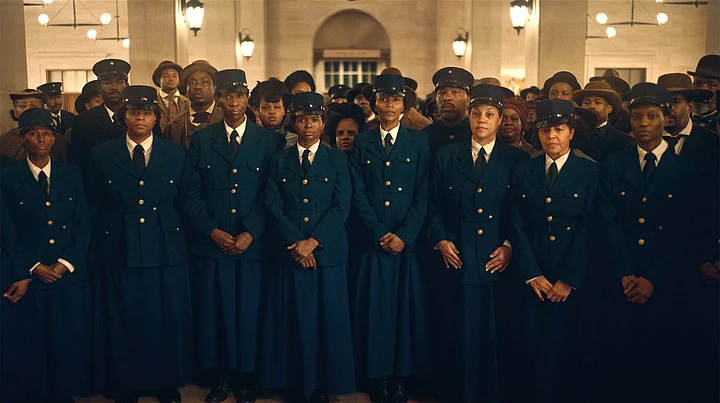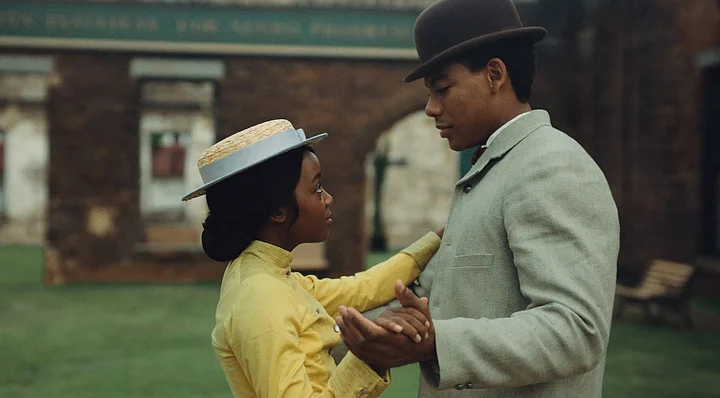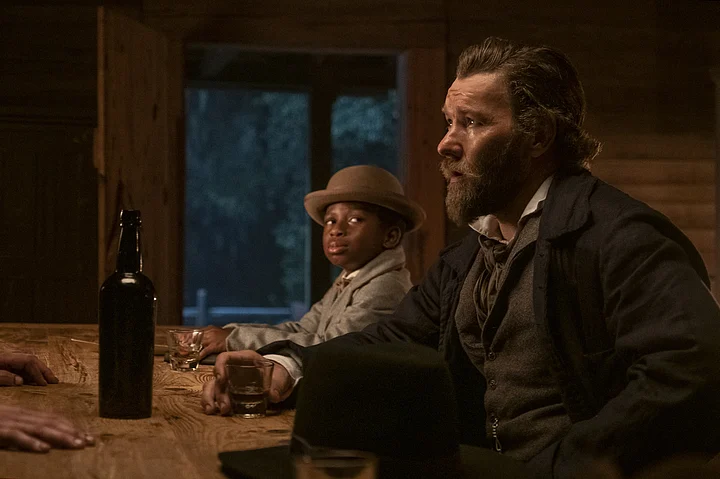On her journey from bondage to freedom, Cora — the runaway slave at the centre of Barry Jenkins' The Underground Railroad — ends up working in a museum of living history in South Carolina. Along with two other women, Cora acts out scenes from the life she has escaped. This includes picking cotton on a plantation in a live-action diorama behind a display glass for white beholders. Keen on “authenticity,” the white museum curator also trains a subordinate on using a whip. The continued oppression of black bodies in white spaces is rendered visible through these shocking images, as Jenkins reflects on how black history has been appropriated and retrofitted by white storytellers. Go all the way back to DW Griffith's The Birth of a Nation. The hegemony of the white gaze is such that it has defined almost every cultural memory in America. Just as no document of history can be considered the absolute truth, no museum exhibit, novel or 10-part series can illustrate the brutal realities of living through America's darkest chapter.
It's partly why Colson Whitehead weaves the real and the fantastic in his novel, which forms the basis of the Amazon series. The Underground Railroad, once a metaphor for the resistance movement, lays the tracks for Cora's escape northward. Literalised into a whole hidden system of steam engines and subterranean tunnels, it ferries runaway slaves across the Southern states to potential safety. In reality, the Underground Railroad wasn’t really underground or a railroad, but a network of secret routes and safe houses set up in slave states bordering free states. Here, it spans even the Southern states. When Caesar, Cora's friend and fellow fugitive, asks a station master who built the Underground Railroad, quick comes the response: “Who builds anything in this country?”

Cora (Thuso Mbedu) and Caesar (Aaron Pierre) escape from a Georgia plantation, riding this materialised metaphor across antebellum South. The Dantean journey will take Cora through the depths of hell, before her ascent to freedom. For the evil of white supremacy knows no bounds. We see it in the forced sterilisation of black women in South Carolina, and the parade of black bodies hanging from trees on North Carolina's “Freedom Trail.” In these dark depths of human depravity, the abolitionists and agents of the Underground Railroad offer a glimmer of light at the end of the tunnel.
Violence is painted in a matter-of-fact way because it was an unavoidable reality for those working on Southern plantations. Daily whippings and lynching-as-entertainment have been normalised it to a point where the enslaved can't possibly get through the day if they aren't desensitised to it. Graphic depiction of violence is often a point of contention among critics who believe it only fetishises black trauma. But Jenkins doesn't waver in his uncompromising focus on the cruelty of slavery and its lasting impact. He insists a proper accounting of America's original sin can only come in its acknowledgment, not in sanitising the suffering. The white man's whip thus becomes a manifestation of the physical and psychological toll that has profoundly marked generations of black people.

Black history has often been recounted through the lens of slavery. But the lens has more often than not had a white gaze behind it. Jenkins implicates the white gaze in the audience by having Cora and the other Black characters look straight at the camera.
Redirecting their unblinking gaze challenges the viewers to confront their nation's history, and its legacy of racism that persists to this day. The most piercing of these gazes comes from Cora herself. Mbedu's eyes are the window to Cora's soul. They express her strength and vulnerabilities in ways words never could. Having been abandoned by her mother as a young girl, Cora's resentment is also what makes her resilient.
Taking us on this violent and visceral journey through the heart of American darkness, Jenkins digs into how racism has always been embedded at the core of America's proud institutions and familial legacies. Putting a relentless face on such institutions and legacies is Joel Edgerton as slave catcher Ridgeway. Bitter over Cora's mother being the only slave to ever evade his capture, he makes it his personal mission to pursue Cora. Helping him in his pursuit is Homer (Chase W. Dillon), a young black boy with misplaced loyalties who sees him as a father figure. Ridgeway's firm belief in America's “manifest destiny” mirrors the myth of exceptionalism that the country continued to employ as rationale for its apparent responsibility to bring “freedom” and “democracy” to all mankind. Hidden beneath Ridgeway’s daddy issues are in fact some answers to the “Make America Great Again” ethos that plagued the nation.

There are a lot more moving parts in a TV series than in a film. Jenkins, however, juggles them with ease. Guided by a singular, unwavering vision, he is never overwhelmed by the sprawling nature of the novel.
Beauty and vulgarity, nature and industry, darkness and light, joy and grief commingle in his carefully constructed mid-19th century America. Intertwined with Jenkins' images are as always the strings of Nicholas Britell. A poignant refrain becomes key to his musical alchemy. Its tonal variations imbue warmth and humanity, softening each blow of cruelty and absorbing each word of vileness.
The penultimate episode could be seen as the defining chapter of the whole show. From a fiery debate to its bloody conclusion, it leaves a lasting emotional impact. There's joy, sorrow, hope, fear, and ultimately, some much-needed catharsis. Though not any easier to watch than the preceding chapters, it makes for vital viewing because it holds the key to unlocking the hypocrisy at the heart of American democracy — “that all men are created equal.” That truth has never been self-evident. For the country's identity isn't defined by some “manifest destiny,” but the genocide of native Americans, the enslavement of Africans, and the detention of migrant children. Like the Childish Gambino song which ends the episode suggests, “This is America.”
The Underground Railroad begins streaming on Amazon Prime Video from 14 May.
(At The Quint, we are answerable only to our audience. Play an active role in shaping our journalism by becoming a member. Because the truth is worth it.)
